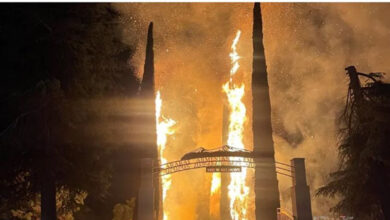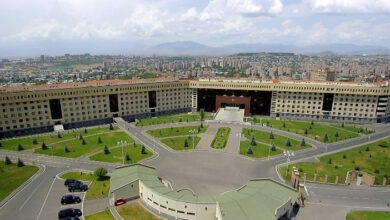Armenian Genocide to be commemorated at Tufts University on April 18

Tufts University, the Darakjian-Jafarian Chair in Armenian History, the Department of History, the Armenian Club at Tufts University, the Executive Administrative Dean at Tufts University, the Armenian Club at Tufts University, and the National Association for Armenian Studies and Research (NAASR) will sponsor the Commemoration of the Centennial of the Armenian Genocide on April 18,, the Armenian Weekly reports.
The Tufts event will feature a lecture by Dr. Sylvie L. Merian of the Morgan Library & Museum, New York City. The evening will be hosted by Ina Baghdiantz McCabe, Professor of History and Darakjian-Jafarian Chair of Armenian History at Tufts University.
The commemoration and lecture will take place in Goddard Chapel on Tufts’ Medford, MA, campus. A reception will follow in the Coolidge Room in nearby Ballou Hall. Parking is available in the Dowling Garage at 419 Boston Avenue and in designated on-street areas.
For centuries, handwritten, illuminated manuscripts were produced by countless cultures throughout the world, not only for use as sacred books in religious services but also as cultural vehicles to pass down religious beliefs, history, and literature for posterity. These scribal and artistic objects were revered and venerated by the people for whom they were produced, even the illiterate. The manuscripts were so closely associated with the native cultural group that produced them that the books sometimes suffered the same fate as the human population did in times of tragic invasions, war, or ethnic persecution. The enemy would often readily attack and destroy these inanimate objects as representations of their human rivals. When Raphael Lemkin coined the term genocide he defined not only the intent to destroy a group of people but the deliberate aim of erasing their cultural legacy.
This lecture will focus on two manuscripts now at Harvard University’s Houghton Library. Both manuscripts were violently attacked during the 1894-1896 Hamidian massacres in the Ottoman Empire. Other examples from the medieval period to today of the deliberate brutalization and destruction of significant cultural artifacts, Armenian and non-Armenian, will also be presented. These will be placed in the larger context of cultural genocide, but will also highlight their survival as a reflection of the survival of the people that created them.
Merian received her PhD in Armenian Studies from Columbia University’s Department of Middle East Languages and Cultures. She has published and lectured internationally on Armenian codicology, bookbinding, silverwork, manuscript illumination, and the history of the book. She is currently Reader Services Librarian at The Morgan Library & Museum in New York City.







